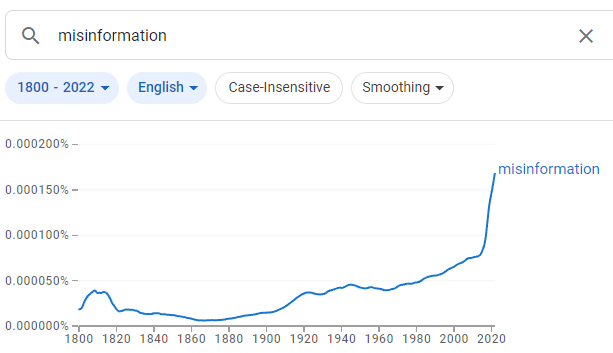This is a story about a much-loved parish priest who looked, dressed, sounded and acted like a parish priest, but lacked what most people (including, one presumes, the Pope) would regard as the single most important and defining feature of parish priests: a belief in the Christian god and at least some of the doctrines of Christianity. In other words, he was a placebo priest.
In simple terms, a placebo is a tablet, injection or procedure – such as a surgical operation or talking and listening – that is claimed (and usually believed by the recipient) to have a specific healing effect, but actually has no such effect. The tablet and injection contain no active drug. The surgery involves just a very superficial incision into the skin that goes no further. The talking and listening are just that and are designed to exclude any specific features of particular kinds of psychotherapy. However, the recipients are either not told that they are having placebo treatment, as was generally the case until half a century ago, or they are taking part in a placebo-controlled trial and don’t know whether they are in the placebo group or having the supposedly real and effective thing.
Strictly speaking, placebo effects relate to the nature and specific features of the treatment – eg tablet, injection, surgery. Non-specific effects are also important but they include things like taking a history, listening, physical examination, reassurance, ordering investigations and establishing a good therapeutic relationship. All of these can be very comforting but are common to most therapeutic encounters. However, what reassures one patient – lots of tests and impressive machines taking electrocardiograms and X-rays – may worry another (‘Does all this attention mean I’m seriously ill?’).
Similarly, the distinctive rituals of religions, and the underlying evidence-free belief in a deity who both listens and responds to prayers, involve exactly the same placebo and non-specific effects that are still so infamous in medicine. The healing professions – orthodox and generally evidence-based as well as so-called ‘alternative’ – have their own rituals. When the roles of priest and healer were combined in the shaman, the overlap was very obvious. It still is at shrines like Lourdes.
Unsurprisingly, the more impressive the placebo and the accompanying sales-talk, the stronger the placebo effect. Impressively large or intriguingly small tablets versus average size and coloured rather than white; expensive rather than cheap; involving impressive equipment featuring flashing lights and beeping noises; extra attention, even if scripted and entirely insincere. That sort of thing.
Some placebo tablets were gold-plated to add both legitimate expense and a dash of theatre. The last gold-plated pill, a precursor of Viagra, could still be prescribed on the NHS until the 1970s.
For many people who attend churches, the drama, ritual and theatricality of the services are important parts of the overall attraction. That’s also true for many of the priests who perform at these events, especially High-Church Anglicans and the traditionalist wing of Roman Catholicism but ‘charismatic’ sects often have rituals derived from an African or Afro-Caribbean background.

It is in the nature of ritual that, at one level, it needs no explaining or justification. Conversely, deviations from important rituals can make people uncomfortable or angry, even if the ritual in question has no particular function beyond its performance. Priests and parishioners can get very worked up about seemingly trivial details of liturgical practice.
The importance of ‘correctly’ performing religious rituals or, conversely, of using the Latin Mass rather than modern vernacular translations, is very similar to the importance attached by homeopathic practitioners to the ritual of ‘succussion’ (ie the hitting of containers of homeopathic solutions against a leather cushion exactly one hundred times) in the preparation of their remedies. There is no rationale to succussion or the slightest evidence for its relevance, but it’s a fine old custom. The homeopathic literature insists that proper succussion and therapeutic success are causally linked and the websites of leading homeopathic pharmacies stress the importance of following the correct homeopathic rituals.
The philosopher Roger Scruton noted that:
In all places and times, people have believed that there is a way into the eternal, a door out of time into a place where nothing changes and all is at rest within its being. And the key to this door is repetition. That is what sacred rituals, sacred words, and sacred places provide: the prayers, chants, costumes, steps and gestures that must be repeated exactly, and for which there is no explanation other than that this is how things are done.
Scruton R Fools, frauds and firebrands: thinkers of the new left. London. Bloomsbury. 2015. p 185.
Notice that God is absent from Scruton’s description. Alain de Botton feels that “Secular society has been unfairly impoverished” by the loss of these and other practices:
We are presented with an unpleasant choice between either committing to peculiar concepts about immaterial deities or letting go entirely of a host of consoling, subtle or just charming rituals for which we struggle to find equivalents in secular society.
de Botton A. religion for atheists, London, Penguin, 2012, 14
Most religious procedures and rituals are supposed to have beneficial effects, including healing ones, but for a sceptic, all of these procedures are essentially placebos. That is because for atheists and agnostics (much the same thing in behavioural terms) as well as deists, they lack the one allegedly vital and specific ingredient – the existence of a deity who both listens to the prayers and responds favourably to them. Einstein said of believers in such a deity:
I cannot imagine a God who rewards and punishes the objects of his creation, whose purposes are modelled after our own — a God, in short, who is but a reflection of human frailty. …although feeble souls harbour such thoughts through fear or ridiculous egotisms.
If the deity was firmly believed not to respond, there would be no theological point in praying to it, though the ritual might still be comforting.
In most religions, priests undergo lengthy training. They are symbolically invested with allegedly special powers when ordained, and thus become intermediaries between their parishioners and the relevant deity. Like the priest-healers (AKA shamans) of homoeopathy and acupuncture, they are generally assumed to have specific knowledge that gives them specific and effective therapeutic ability. Unless they accept that their nostrums have only placebo effects, which most of them don’t, they must believe in their therapeutic doctrines.
A placebo-controlled trial of religious procedures might therefore involve exposing a group of parishioners to prayers and rituals conducted by a real believer in the relevant faith while another group was exposed to a placebo priest who made the same movements and spoke the same words but did not believe in the doctrines he was expounding. One of Edzard Ernst’s first controlled trials was of spiritual healing. It showed that actors did as well as professional healers, and that real but invisible healers sitting in kiosks got the same beneficial results as kiosks containing only air. However, the spiritual healers were not using any specific religious faith, and it was thus not a trial of Christian prayers vs Islamic or Hindu ones, Catholic vs Protestant entreaties or godly vs godless practitioners.
When modern clergy lose their faith, they do not necessarily lose or leave their clerical employment. A study by Daniel Dennett and Linda LaScola asked the question: what is it like to be a pastor who stays the course in this situation? One short answer, not much discussed in their paper, is that from the point of view of their parishioners, it makes no difference, particularly if the priest keeps his doubts to himself.
Even today, the roles of the priest and the physician often overlap. Both doctors and priests spend much of their lives demonstrating that a problem shared is often a problem halved, or at any rate a problem reduced. Both are walking and talking placebos but whereas modern doctors are rather more than that, priests – ancient or modern – are not. Provided that they look like a priest, talk like a priest and act like a priest, neither parishioners nor other priests will be able to detect priests who lack what in theory ought to be a crucially important qualification for the job; the possession of a specific religious faith. Though I argue that no priest has more than placebo and non-specific effects, a disbelieving cleric can be regarded as a sham priest for comparative purposes.
The doubting American priests interviewed by Dennett and La Scola come across as a rather sad bunch – partly because they were doing a job that made them increasingly uncomfortable, but mainly because most of them had nobody with whom they could share their sadness and discomfort. The interviews with researchers were often the first time they had been able to do that. There were only five of them in the study and they came from churches ranging from Southern Baptist through Methodist to Presbyterian, but all insisted that they were not alone and were simply the tip of a very large and rarely-mentioned theological iceberg.
The recently founded Clergy Project, ‘a confidential online community for current and former religious professionals without supernatural beliefs’ has 1,263 members as of 2024; 332 current and 931 former priests. In the US, they come from nearly all states, including the Bible Belt. Most wanted to leave their posts but wondered what they would do instead, and how they would make an equally comfortable living, especially if they lived in a church-owned house. Some couldn’t even come out to their spouses and children. One Methodist pastor who went public, Tim Prowse, admitted that:
As an active minister, I did not discuss my atheism with colleagues or parishioners. Facing lost wages, housing and benefits, I chose to remain silent. However, I did confide in my wife who provided a level of trust, understanding, and support that proved invaluable. Unfortunately, some ministers do not enjoy mature confidants.
Happily for him, friends offered him cheap housing and a job.
Placebo priests of the past
That was not an option for Jean Meslier, the first recorded Christian priest to say publicly and in print (or at any rate, in manuscript) that the whole thing was essentially a myth, that the Bible was clearly man-made and full of contradictory and unpleasant stories, and that religion had been co-opted by ruling elites to consolidate their hold over the lower orders. This first placebo priest that we know of spent most of his priestly life providing completely insincere prayers and rituals for his appreciative parishioners in the late 17th and early 18th centuries, apparently without any of them noticing the missing ingredient.
That he is so little known probably reflects the fact that it has taken nearly 300 years for his only work to be recently translated into English. None of the ‘new atheists’ has mentioned him, and he didn’t appear in Atheism: A Rough History of Disbelief, Sir Jonathan Miller’s short 2004 TV series (when it was broadcast in the US, the shocking word ‘atheism’ was removed from the title).
Father Jean Meslier’s neglect by historians is surprising, because as well as being probably the first European since Roman times to put his name to an overtly atheist document, Meslier was also unusual in being an early agrarian socialist and anti-monarchist, like his near-contemporaries the Levellers of the English Civil War, though he doesn’t mention them. Furthermore, his clerical credentials were impeccable, since he passed his entire adult life as the apparently popular priest of Étrépigny, a tiny village in North-East France, and knew exactly what he was rejecting. At some personal cost, he supported his downtrodden and impoverished parishioners against the local tyrant De Toully, a rapacious and wicked squire straight out of central casting.
Too scared to speak his mind to anyone during life, in 1729 he left by his death bed three copies of a mordant, well-referenced denunciation of supernatural beliefs. He called it a Mémoire of his thoughts and sentiments about the religions of the world but it is often referred to as his Testament. “All religions are nothing but errors, illusion and imposture” is a typical chapter heading. “The wisdom and learning contained in the so-called holy books are only human” is another. To read Father Meslier is to read an earlier, rustic incarnation of Richard Dawkins, Sam Harris and Christopher Hitchens. There’s nothing new about the ‘new atheists’.
Despite his small library and apparent lack of intellectual company, he criticised the numerous errors and inconsistencies in the Bible well before German theologians got round to it over a century later and over two centuries before Catholics were officially allowed to, in 1943, including asking, “What certainty do we have that the four Gospels…were not corrupted and falsified, as we see happen to so many other books even today?” We also find proto-evolutionary thinking (Nature “acts blindly…without knowing what it is doing or why it is doing it”) – even some proto-Malthusian anxieties. All very modern, as is his defence of divorce when domestic strife makes children miserable and parents “give them bad examples every day and fail to educate them… in the arts and sciences as well as in good manners”. Meslier himself had a young ‘housekeeper’ (he passed her off as a cousin) and evidently had relaxed views about sex. Though not a vegetarian, he deplored the prevalent brutality towards farm animals.

His neglect by historians may also be due to another dangerously heretical book titled ‘Common Sense’, wrongly attributed to Meslier since the 1790s and still confusingly published under his name. In some ways, ‘Common Sense’ is better written, but its real author was an amiable aristocrat, the Baron d’Holbach, who wisely published everything pseudonymously and almost certainly rejected Meslier’s radicalism, which was briefly recognised during the Revolution that followed d’Holbach’s perfectly-timed natural death in 1789. In contrast, Voltaire said that Meslier wrote “like a carthorse”. It’s true that Meslier can be repetitious, but there are several flashes of scorn and humour, though his most famous (and invariably mis-attributed) phrase – “I would like to see the last king strangled with the guts of the last priest” – is not his own, as he truthfully records.
In 1761, Voltaire published a dishonest and much-shortened travesty of the Mémoire that made Meslier appear a deist, like Voltaire himself. It excised all reference to Meslier’s anti-monarchism and egalitarianism (both of them absolute anathema to Voltaire), presenting him as a death-bed convert rather than the life-long disbeliever he had undoubtedly been.
Meslier’s parishioners knew nothing of his heretical views, and neither did his priestly neighbours, nor his superiors. The local Archbishop, down the road at Reims, rapped his knuckles when he preached against the rapacity of Squire de Toully, but records of parish inspections confirm that in all other respects, he was regarded even by Reims as a good and well-organised priest, in an age when the village priest was an important provider not just of spiritual comforts and rituals but also of official pronouncements and news.
One thing that I find rather endearing about Meslier is that despite his rejection of religion, he seems to have enjoyed his pastoral work which, in the absence of a welfare state, must have been much more comprehensive than anything a modern village priest has to contemplate. I think of him as a bit like an old-fashioned country doctor – a Dr Finlay figure, knowing almost everything that went on in the village and possibly the only really literate and well-read inhabitant.
His neat entries in the parish register indicate a sound education and confirm the authenticity of the Mémoire manuscripts in the Bibliothèque Nationale. We can easily imagine what went through his mind as he intoned every day the words of the mass and of all the other services – baptisms, weddings and funerals – that were so central to village life. Especially funerals, for the post-mediaeval ‘Little Ice Age’ reached one of its peaks during Meslier’s tenure. The winter of 1708-9 was probably the coldest on record and over half a million died of famine in France alone. In Venice, people skated on the lagoon and as if what was known in England as ‘The Great Frost’ wasn’t enough of a disaster, 1709 also included the War of the Spanish Succession. The site of Marlborough’s victory at Oudenaarde is an hour’s drive from Étrépigny today, just over the Belgian border. Even in happier periods:
a provincial economy within a hundred miles of Paris [in the mid-18th century] was a precarious balance between subsistence and dearth, with its agricultural technique hardly changed at all since mediaeval times.
Darwin J. After Tamerlane: the rise and fall of global empires 1400-2000. London. Penguin. 2008. 141
We know exactly what Meslier thought about Holy Communion, the most solemn and impressive bit of theatre and audience-participation in the whole, impressive business of the Mass, because he tells us. “Le dieu de pâte et farine”, he writes dismissively. “The god of dough and flour”.
Another 21st century Meslier – an unbelieving American priest who regularly blogs under the name of ‘Stan Bennett’ – describes his own feelings in church:
But while I like to study and think, the Sunday morning presentation fills me with dread because at some point, I’m going to be saying something I don’t believe. My whole life, I have tried to be truthful, and now I am intentionally saying something I don’t believe is true. This is what causes my heart to race, my blood pressure to rise, and bones to ache… I no longer speak of developing a personal relationship with Jesus, but instead speak of being loyal to his cause, which might include social justice issues as well as concepts of love, truth, and generosity.
Asked during the same interview if he ever got any interesting or challenging questions after his Easter sermons, he replied:
I never have seen much of that. They don’t want me to rock their boat too much and force them to think because it might ruin their day. They expect me to use the religious language to which they are accustomed. Beyond the ritualism, it’s not real to most of them.[my italics] Actually, it’s hard to disturb them because they aren’t listening. …And they’ll crowd into one pew, sing the same songs as when they were young, watch the latest crop of children get baptized, smile at each other, and none of them will be able to repeat even a word or two of what I said, except maybe the funny story I told or an old thought that resonated from their Sunday school days.
A similar survey of rabbis who no longer believed in God found less unhappiness and more adaptation. As yet, no Muslim academic seems to have been brave enough or optimistic enough to question Mullahs and Imams in a similar way. Healers who don’t believe in science – homeopaths, for example – will do a lot of damage if you let them treat your hyperthyroidism or diabetes homeopathically, even if they look and sound to you like real doctors; but Roman Catholic priests who don’t believe in God and think that communion wine is just wine can be absolutely indistinguishable in their rituals and the earthly results of their ministrations from the real thing. This is placebo effect with real style.
I don’t know what the official Vatican line is on the validity of Holy Communion performed by apostates with bread and wine that they have supposedly consecrated, though apparently the actual words still do the trick even if the speaker has doubts. The Anglican church says that the sacraments “are not rendered ineffectual by the unworthiness of the minister” because “they do not do these things in their own name but in Christ’s and minister by His commission and authority”, but what happens if ‘unworthiness’ means not sexual or financial misbehaviour, but a fundamental rejection of Christ’s existence, genealogy, commission and authority? Were Meslier’s deceived parishioners automatically excluded from heaven? It seems that having an unbelieving and privately blasphemous priest made no difference to their daily lives as compared with neighbouring parishes served by conventional and conforming priests.
If there had been any obvious differences between Étrépigny and its neighbours as regards infant mortality, fertility, longevity, the incidence of common childhood and adult diseases and the health of its flocks and crops, I think the locals would have noticed and commented. The same presumably goes for Stan Bennett’s parishioners, except that today’s detailed mortality and morbidity statistics would have revealed any differences even more quickly. Epidemiologists would soon descend on any town or suburb with unexpectedly large or small numbers of patients with particular diagnoses, or of deaths.
We certainly know, as Meslier did, what that official Vatican line was when it came to unbelievers themselves, because he mentions a particularly brutal example that occurred only a few decades before his birth. Lucilio Vanini, who sometimes called himself Julio Cesare Vanini, was a well-connected itinerant academic and philosopher from a prosperous Italian family – a sort of Alain de Botton of his time. He had a lively and irreverent writing and lecturing style but his contacts with the movers and shakers of Parisian society kept him out of trouble until 1619.
In that year, a book that he had written came to the attention of some of the ecclesiastics and magistrates of Toulouse when he was staying in the area. It was written in the form of a Socratic dialogue and did not advocate atheism, but one of its fictional characters discussed the forbidden topic in an oblique and almost apologetic way. That was too much for the defenders of the status quo, who convicted him of atheism and blasphemy. Vanini managed to give a brave little speech before his tongue was cut out and he was strangled and burned to ashes aged only 33. Even when they had less barbaric deaths, that sort of heretic was often buried in an unmarked grave, as Meslier was when his Testament was quickly discovered and read – the Vatican equivalent of Moscow’s air-brushing of dissident communists from the official record.
These days, unhappy people in Britain are much more likely to discuss their unhappiness with a therapist than with a priest. However, there is increasing evidence that like the doctrines that supposedly lie behind satisfying religious rituals, the doctrines supposedly making for successful outcomes in counselling and psychotherapy are very much less important than the ritual, symbolic and non-specific components of ‘therapy’. Cognitive behavioural therapies are an exception but, even in CBT, the ritual and symbolic aspects may be paramount. So are other non-specific components like suggestion, expectation, hope, belief (justified or not) and the therapeutic relationship. That certainly applies to psychoanalysis. In the index to the complete works of Sigmund Freud, the highly significant missing word between ‘penis’ and ‘pleasure’ is ‘placebo’.

















